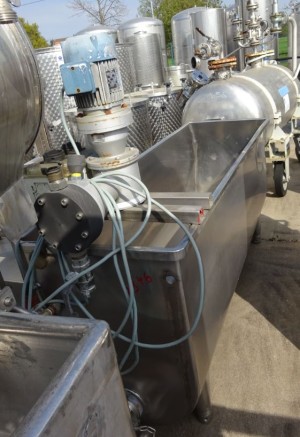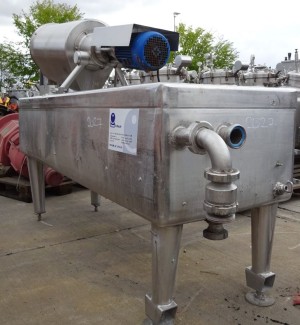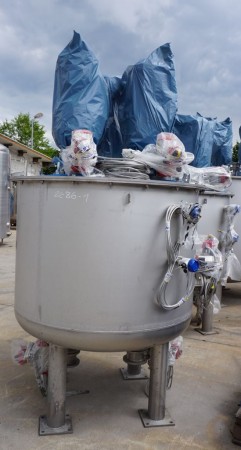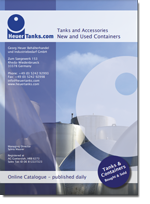Mixing tank for chemicals/pharmaceuticals
Mixing tank
Basin 500 liters made of V2A, used, single-walled
Art.-Nr. M-2027
EUR 1.200,00
add. 19 % VAT excl. shipping costs
Wanne 500 Liter aus V2A, gebraucht, einwandig
EUR 1.200,00
add. 19 % VAT excl. shipping costs
Basinn 1.500 / 1.500 liters made of V2A, used, single-walled
Art.-Nr. M-2002
EUR 5.800,00
add. 19 % VAT excl. shipping costs
Wannen 1.500 / 1.500 Liter aus V2A, gebraucht, einwandig
EUR 5.800,00
add. 19 % VAT excl. shipping costs
Circulation container 1.100 liters made of V2A single-walled, unused
Art.-Nr. M-2686
EUR 10.800,00
add. 19 % VAT excl. shipping costs
Zirkulationsbehälter 1.100 Liter aus V2A einwandig, ungebraucht
EUR 10.800,00
add. 19 % VAT excl. shipping costs
Mixing tank
For industry, a mixing tank is an optimal solution for mixing and stirring large portions of substances without any issues such that all substances are well distributed. In principle, there are many tanks that can be used as a mixing and stirring tank. It’s important to have the option of installing an agitator in the tank. What it looks like depends on the substance to be mixed in the tank. It’s not only liquid or moist substances that are mixed. Dry substances, such as grain, are mixed in large tanks as well so that they can be more easily processed later on.
Mixing tanks for pharmaceuticals and chemistry
Nowadays, mixing tanks are indispensable in modern pharmaceutical facilities. Such tanks usually have additional functions like a warming and cooling function. It’s possible to prepare as well as store the material inside as it can be controlled with the agitator found in the tank from the outside with the press of a button. Sensors inside the tank can help in the production process, as they measure the temperature, pressure or speed of the agitator. This allows the process to be highly controlled.
Mixing tanks in the food industry
Mixing tanks are also used in the food industry. A good example of this is beer brewing. Right at the beginning of the process, if the malt grist needs to be mixed with water, this will be done in the mixing tank. This tank is also a mash tank (also known as a mash tun kettle) at the same time. Other foodstuffs can be mixed and stirred in a mixing tank as well. Honey is also stirred in tanks before it’s decanted. Depending on the size of a company, dough for baked goods can also be stirred or mixed in large mixing tanks.
Functions and material
In addition to boiling and cooling functions, mixing tanks frequently comprise a few other features as well. For viscous mixtures, it’s particularly important for there to be an outlet or, depending on the size, an opening for tilting the tank. This is because mixtures that don’t pour easily must also be able to leave the tank without issue. Mixing tanks are generally made of stainless steel. This makes them more stable, as there is movement inside the tank. Accordingly, the tank must also stand stably and be placed on level, solid ground.











